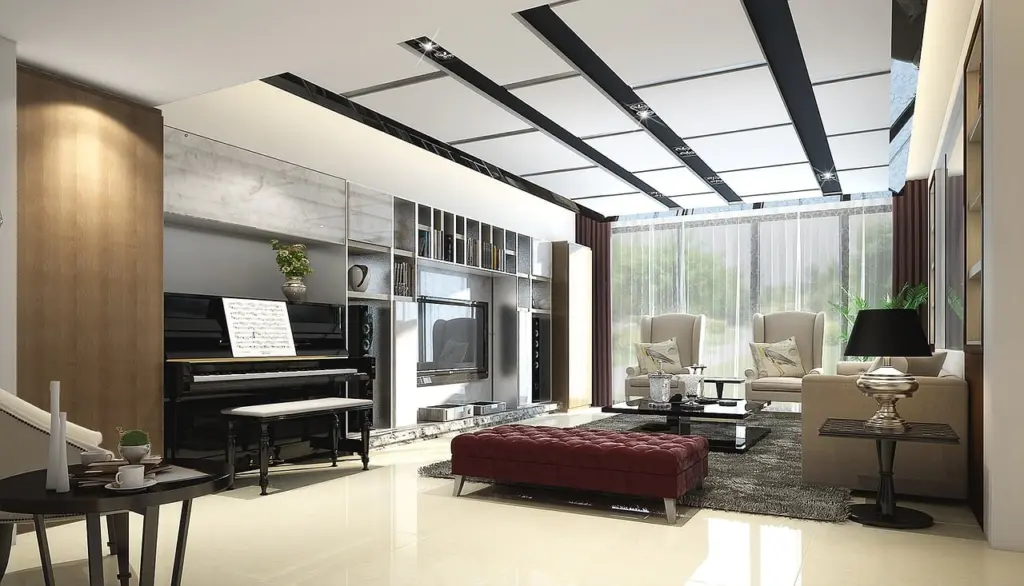The field of interior design is experiencing a transformative shift thanks to the advent of AI technology. AI interior design tools are now at the forefront of this change, allowing designers and homeowners to conceptualize and visualize spaces in innovative ways. These digital tools are not only making the design process more efficient but also enhancing creativity, enabling users to explore a myriad of design possibilities. With the integration of AI, traditional design methodologies are evolving into more dynamic, responsive approaches.
This shift towards AI in interior design is particularly relevant in 2024, as both professionals and enthusiasts seek to leverage technology for better outcomes. The ability to visualize ideas in real time means that clients can see potential designs before any work begins, reducing misunderstandings and improving satisfaction. Moreover, the user-friendly interfaces of these tools allow even those with minimal design experience to engage meaningfully in creating their ideal spaces. As AI continues to develop, its role in shaping the future of interior design becomes increasingly significant.
The Rise of AI in Interior Design
AI tools are transforming how designs are approached and visualized, providing an unprecedented level of support and inspiration for designers. Through advanced algorithms and machine learning, these tools analyze vast amounts of data to suggest optimal design solutions tailored to user preferences. By integrating AI technology, designers can enhance their creative processes and work with greater efficiency, leading to more innovative and bespoke designs.

Moreover, the use of digital tools in interior design has streamlined workflow, allowing for quicker iterations and modifications. Designers can experiment with color palettes, furniture arrangements, and spatial layouts instantaneously. The integration of AI enables enhanced creativity, as designers can explore a wider range of ideas and styles than ever before. This shift signifies a move from traditional, manual design processes to a more interactive and collaborative approach that empowers both designers and clients alike.
The future of interior design is bright, as AI continues to push the boundaries of creativity and efficiency. With tools that help visualize concepts quickly and accurately, the potential for innovation in the industry is limitless. Homeowners are better equipped to make informed decisions, leading to spaces that truly reflect their personalities and lifestyles.
How to Effectively Use AI Tools for Interior Design
To make the most of AI interior design tools, it is essential for users to prepare adequately before diving into the design process. One of the first steps is to gather accurate measurements and high-quality images of the space they wish to design. Having these elements ready allows the AI tools to generate more precise and relevant design outputs.
Additionally, using specific and descriptive language when entering design prompts can significantly enhance the quality of the results. Instead of vague requests, users should articulate their preferences clearly, indicating styles, colors, and functionalities they desire. Experimentation with different prompts can also yield a diverse range of design ideas, helping users discover unexpected solutions that align with their vision.
Incorporating feedback into the design process is another critical aspect. As users interact with AI tools, they should reflect on the outputs generated, making adjustments based on their tastes and needs. This iterative approach not only maximizes the utility of the AI tools but also fosters a collaborative environment between the user and technology, leading to innovative and personalized design outcomes.
Top AI Interior Design Tools and Their Features
Several AI interior design tools have emerged as frontrunners in the market, each offering unique features that cater to various design needs. VisualizeAI stands out for its user-friendly interface, which allows users to generate designs effortlessly. With its intuitive design prompts, even those with little experience can create compelling visualizations of their spaces.
HomeVisualizerAI takes a step further by enabling users to merge sketches with real images, providing a seamless integration of conceptual designs with real-world environments. This feature allows users to see how their ideas might translate into actual spaces, making it easier to assess the viability of their designs.
RoomsGPT is another innovative tool that provides tailored design ideas based on user inputs. By analyzing user preferences, RoomsGPT generates customized suggestions that reflect individual styles and needs, ensuring that the final design is both functional and aesthetically pleasing. These tools represent the forefront of interior design innovation, showcasing how AI can be harnessed to create creative design solutions that resonate with users.
User Experience and Limitations of AI Tools
While AI tools can produce stunning and realistic designs, users should also be aware of their limitations. One common challenge is that these tools may generate unexpected elements that do not align with the user’s vision. It’s essential for users to approach AI outputs with a critical eye, understanding that the technology, while powerful, is not infallible.
Moreover, a solid grasp of design terminology can significantly enhance the user experience. Familiarity with terms like “color theory,” “spatial arrangement,” and “focal points” allows users to communicate their preferences more effectively to the AI, leading to better results.
Finally, it’s important to view AI tools as supplementary to human creativity rather than replacements. While they can provide valuable insights and suggestions, the human touch in design—empathy, intuition, and personal style—remains irreplaceable. Engaging playfully with these tools can lead to unexpected discoveries and delightful outcomes, blending technology with artistry in the realm of interior design.
The Role of Professional Designers in AI-Generated Designs
Professional designers play a critical role in enhancing AI-generated designs through their expertise and creativity. While AI interior design tools can quickly produce concepts and layouts, they lack the nuanced understanding of human preferences and aesthetics that skilled designers possess. Designers bring a unique perspective that combines function and style, ensuring that the final outcome meets both practical needs and artistic vision.
Collaboration between AI tools and human designers can lead to innovative results. For instance, designers can utilize AI to generate multiple design options based on specific criteria, such as space dimensions or desired styles. This partnership allows designers to explore a wider range of creative solutions and refine concepts more efficiently. AI assistance can also streamline mundane tasks, enabling designers to focus on higher-level decision-making and creative processes.
Despite the impressive capabilities of AI, it does not replace the designer’s role. Instead, it serves as a powerful tool that enhances their capabilities. Designers can interpret AI-generated ideas and adapt them to create personalized spaces that reflect individual tastes and lifestyles. This collaboration between technology and human creativity is essential in shaping the future of interior design, ensuring that designs are not only visually appealing but also deeply aligned with the needs of clients. The synergy between professional designers and AI tools is transforming the landscape of interior design, leading to unprecedented levels of innovation.
Future Trends in AI and Interior Design
The future of interior design is poised for significant transformation as AI advancements continue to evolve. One notable trend is the increasing integration of augmented reality (AR) features into AI design tools. This technology allows users to visualize potential design changes in real-time, providing an interactive experience that can facilitate better decision-making. As AR becomes more accessible, homeowners and designers alike will benefit from the ability to see how different elements work together within a space before committing to changes.
Moreover, AI has the potential to personalize design experiences on an unprecedented scale. With the ability to analyze user preferences and behaviors, AI can suggest tailored design solutions that cater to individual tastes. For example, an AI system could learn a homeowner’s style preferences over time, recommending color schemes, furniture arrangements, and decor that resonate with their personal aesthetic. This deep personalization is expected to enhance user satisfaction and engagement, making the design process more enjoyable and effective.
As the design industry embraces these future trends, the collaboration between AI and human designers will likely become even more critical. The advancements in AI technology are not just about enhancing efficiency; they also offer opportunities for creative exploration and innovation. By harnessing the power of AI, designers can push the boundaries of traditional interior design, paving the way for exciting new possibilities in how we create and experience living spaces.
Success Stories: Case Studies of AI Implementations in Design
Numerous companies have successfully integrated AI tools into their design workflows, showcasing the technology’s impact on the industry. One prominent example is a design firm that utilized AI to visualize rooms in various styles and colorways. By inputting specific parameters, such as room dimensions and desired aesthetics, the AI generated multiple design possibilities in a matter of minutes. This rapid visualization enabled the designers to present clients with a diverse range of options, significantly improving client engagement and satisfaction.
Another success story involves a tech-savvy interior design startup that employed AI algorithms to analyze trends and predict future design preferences. This data-driven approach allowed the firm to stay ahead of the curve, enabling them to offer innovative design solutions that resonated with clients. By leveraging AI’s analytical capabilities, the company was able to enhance its creativity and deliver unique spaces that reflected current and emerging styles.
These real-world examples illustrate the effectiveness of AI in enhancing user experiences within the design process. The incorporation of AI tools not only streamlines workflows but also fosters creativity and innovation. As the industry continues to evolve, the success stories of AI implementations will likely inspire more professionals to explore the potential of AI interior design tools, ultimately transforming how spaces are designed and experienced.
